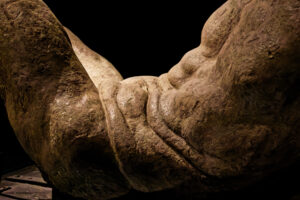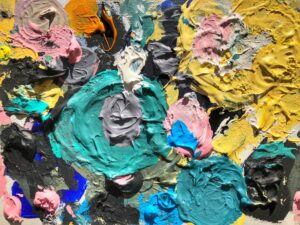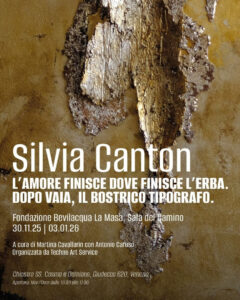In this article, you will explore how visceral art can touch the deepest chords of your emotions. You will discover how artistic works, characterised by raw materials and accentuated forms, can evoke instinctive and primal reactions. Through the analysis of various styles and artists, you will understand the emotional connection visceral art establishes with the viewer, deepening your perception and understanding of the emotional world around you.
Defining visceral art
Visceral art is an artistic expression that connects deeply with human instinct and primal emotions. It invites the viewer to reflect on their internal experiences through the use of shapes, colours and textures that evoke intense feelings. This type of art transcends traditional aesthetics, emphasising the emotional reaction and connection between the work and the viewer, creating an experience of deep and personal interaction.
Origins and history
Visceral art has origins dating back to the earliest human artistic expressions, when man sought to communicate experiences and emotions through rudimentary forms. This approach found its way into various art movements, such as surrealism and contemporary art, where subjectivity and introspection became central. Through the ages, visceral art has maintained a connection to the deepest emotions, pushing artists to explore the dark and authentic side of the human condition.
Techniques and Materials
The techniques and materials used in visceral art are varied and innovative. Artists may employ painting, sculpture, installations and performance, using unusual materials such as metal, plastic or even organic elements. These materials help create works that stimulate perception and intuition, while the techniques employed can range from gestural approaches to more deliberate and meditative ones. This diversity allows each artist to express their interpretation of visceral emotions in unique and authentic ways.
Primal emotions and their representation
Primal emotions, such as joy, fear, sadness and anger, are essential to your human experience. These emotions deeply influence your behaviour and decisions. In visceral art, these feelings are represented through intense shapes and colours, allowing you to recognise and connect with your deepest experiences. The artist acts as an intermediary, using his work to explore and communicate the intensity of these universal emotions.
Understanding primal emotions
Understanding primal emotions is fundamental to deepening your connection with art. These emotions are universal and cross cultures and generations. Through careful observation of the works, you can begin to decipher the emotional messages the artist wishes to convey, facilitating personal reflection and inner dialogue. Art thus becomes a means to explore and understand your most authentic feelings.
Art as a universal language
Art is considered a universal language because it transcends language and cultural barriers. It communicates emotions in ways that words often fail to capture. When you immerse yourself in a work of art, you can perceive feelings and ideas that resonate deeply within you, regardless of your background. This power of emotional connection allows anyone to relate to the work, creating a shared experience that embraces common humanity.
In visceral art, this language manifests itself in bold shapes, vibrant colours and provocative compositions. Each visual element stimulates your subconscious, evoking emotional reactions that you can often recognise as part of your own human condition. Through the observation of these works, you develop a greater awareness of your primal emotions and how they are represented in the artist’s work. thus, art becomes a bridge between you and the world, facilitating introspection and emotional dialogue.
Influence of visceral art on emotions
Visceral art has a profound influence on human emotions, as it manages to touch the most intimate chords of our being. This type of art, characterised by bold shapes and intense colours, awakens primal feelings that reflect lived experiences. You can recognise how visceral art challenges conventions and forces us to confront restlessness, joy or vulnerability, thus enabling a direct and genuine emotional connection.
Examples of emotional impact
Think about how some visceral works of art, such as those by Francis Bacon or Lucian Freud, manage to convey strong anguish. Distorted subjects and soft colours can evoke feelings of sadness and introspection. These works not only catch the eye, but also elicit an emotional response that prompts you to reflect on your own human condition.
Public reaction
When confronted with visceral art, it is common to experience intense and even ambivalent reactions. Some viewers may feel attracted, while others may feel discomfort or even rejection. This variety of responses is what makes visceral art so powerful; it challenges your expectations and pushes you to confront your deepest emotions.
The moment you look at a work of visceral art, it is inevitable that your mind begins to process complex feelings. You may find that you feel vulnerable, affected by the brutality of the visual message. This process not only stimulates your empathy, but also gives you the opportunity to explore your inner psychology. The reaction of the audience then becomes an open dialogue between the artist and the viewer, where each interpretation is unique and valid.
Visceral art in the contemporary context
Today, visceral art manifests itself in various contexts, ranging from painting to installation. It continues to stimulate the imagination, inviting the viewer to explore the depths of their emotions. In today’s society, characterised by social and psychological challenges, these works act as mirrors of human experiences, bringing out the tensions between body and mind, individuality and collectivity.
Current artists and currents
In the current art scene, several emerging figures are dedicated to visceral art, using innovative techniques to express their worldview. Artists such as Marina Abramović and Anish Kapoor, for example, explore the boundary between the body and art, engaging the viewer’s emotions in a deeply intimate way. These currents reflect a renewed focus on corporeality and a clear desire to address complex and personal issues.
Reflections on modernity
At a time when reality is often filtered through social media and technology, visceral art represents an authentic and direct response to human experience. As we immerse ourselves in modern dynamics of isolation and disconnection, these works remind us of the importance of genuine interaction with our emotions and bodies. They invite critical reflection, challenging you to confront your vulnerability and recognise the importance of human connection in your daily life.
Comparisons with other art styles
When analysing visceral art, it is crucial to consider its relationships with other art styles. In particular, abstract art and figurative art offer interesting perspectives. These styles, while having different approaches, may share some of the same primal emotions that visceral art seeks to express.
Abstract art and figurative art
When comparing abstract and figurative art, notice how both styles can evoke intense emotions. While figurative art represents the real world, abstract art focuses on form, colour and texture. However, both can serve to communicate profound human experiences.
Shared elements and differences
When you examine the commonalities and differences between visceral art, abstract art and figurative art, you discover a fascinating dialogue between emotions and expressive techniques. Visceral art can have a strong abstract component, while figurative art is based on recognisable images. However, both styles can reinforce your understanding of your inner world, using colours, shapes and compositions to evoke deep feelings and reactions.
The future of visceral art
The future of visceral art promises to be fascinating and full of possibilities. With technological innovation and the emergence of new forms of artistic expression, you have the opportunity to explore primal emotions in ways you never imagined. Visceral art will continue to evolve, always finding new ways to connect with audiences and reflect the complexities of human experience.
Innovation and experimentation
In a world of constant change, innovation and experimentation are essential to the evolution of visceral art. You can harness cutting-edge technologies, such as augmented reality and virtual reality, to take your work to the next level. The combination of traditional materials and modern techniques allows you to create multi-sensory experiences that deeply engage the viewer.
Evolutionary potential
The evolutionary potential of visceral art is limited only by your imagination. As new tools and platforms develop, you will have access to unique opportunities to explore and communicate deep emotions. This art form can adapt and respond to contemporary issues, expanding the boundaries of artistic expression. The result is an increasingly complex and meaningful visual language, capable of addressing universal and personal issues.
Visceral art has the potential to grow and change over time, allowing you to reflect the experiences of your life and contemporary societies. With each new generation of artists, this art form takes on new directions, enriching itself with new meanings and interpretations. By experimenting with different media and approaches, you can discover new ways to express your inner world and emotions, creating an even deeper connection with your audience.
How does visceral art express primal emotions?
In conclusion, visceral art offers a powerful means to explore and communicate primal emotions that might otherwise remain unexpressed. Through forms, colours and materials, you can get in touch with your inner self and experience a deep connection with basic human feelings. This type of art invites you to reflect on your innermost emotions and consider how creativity can serve as a vehicle for personal expression and collective understanding. Embrace this experience and be guided by your most authentic emotions.



